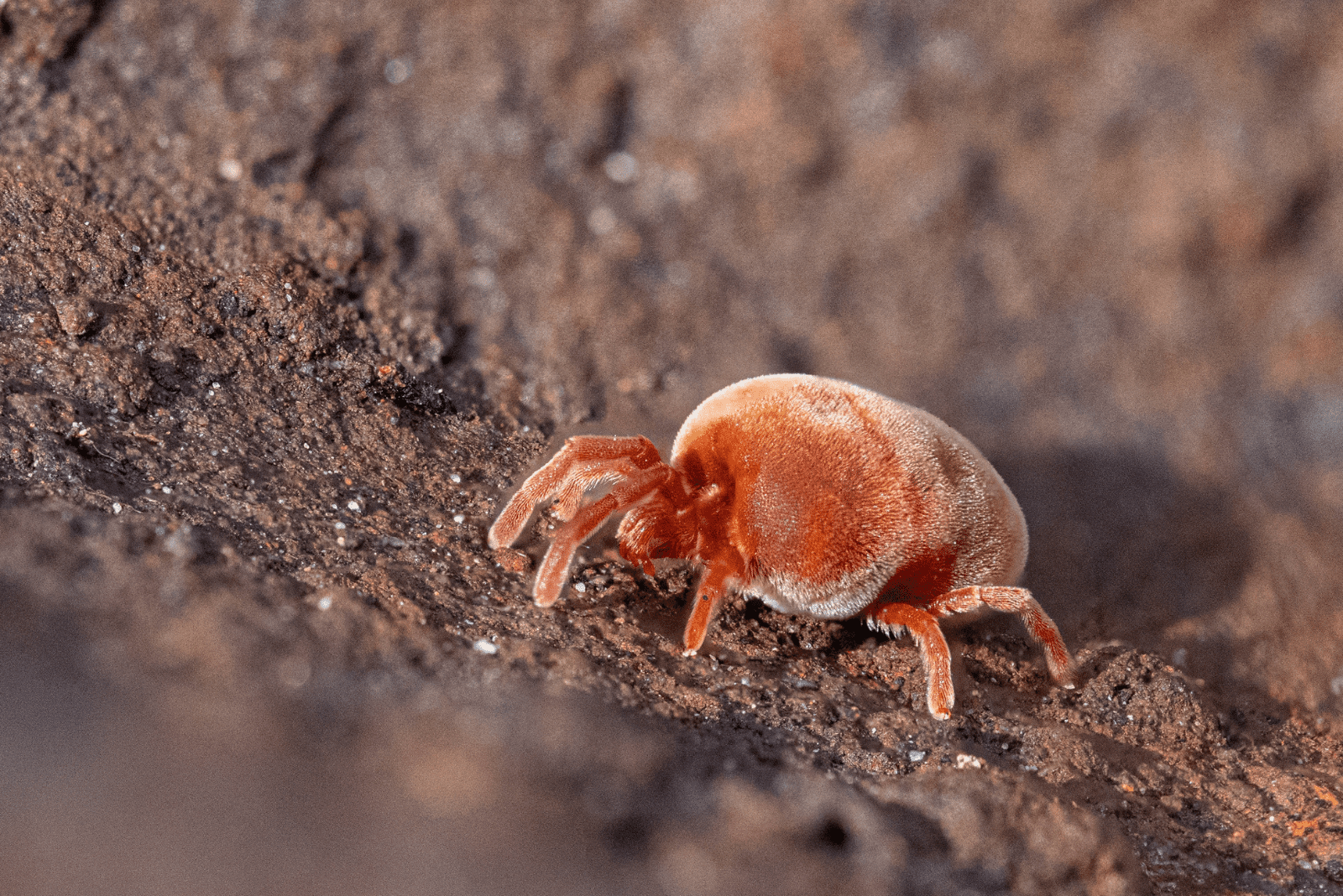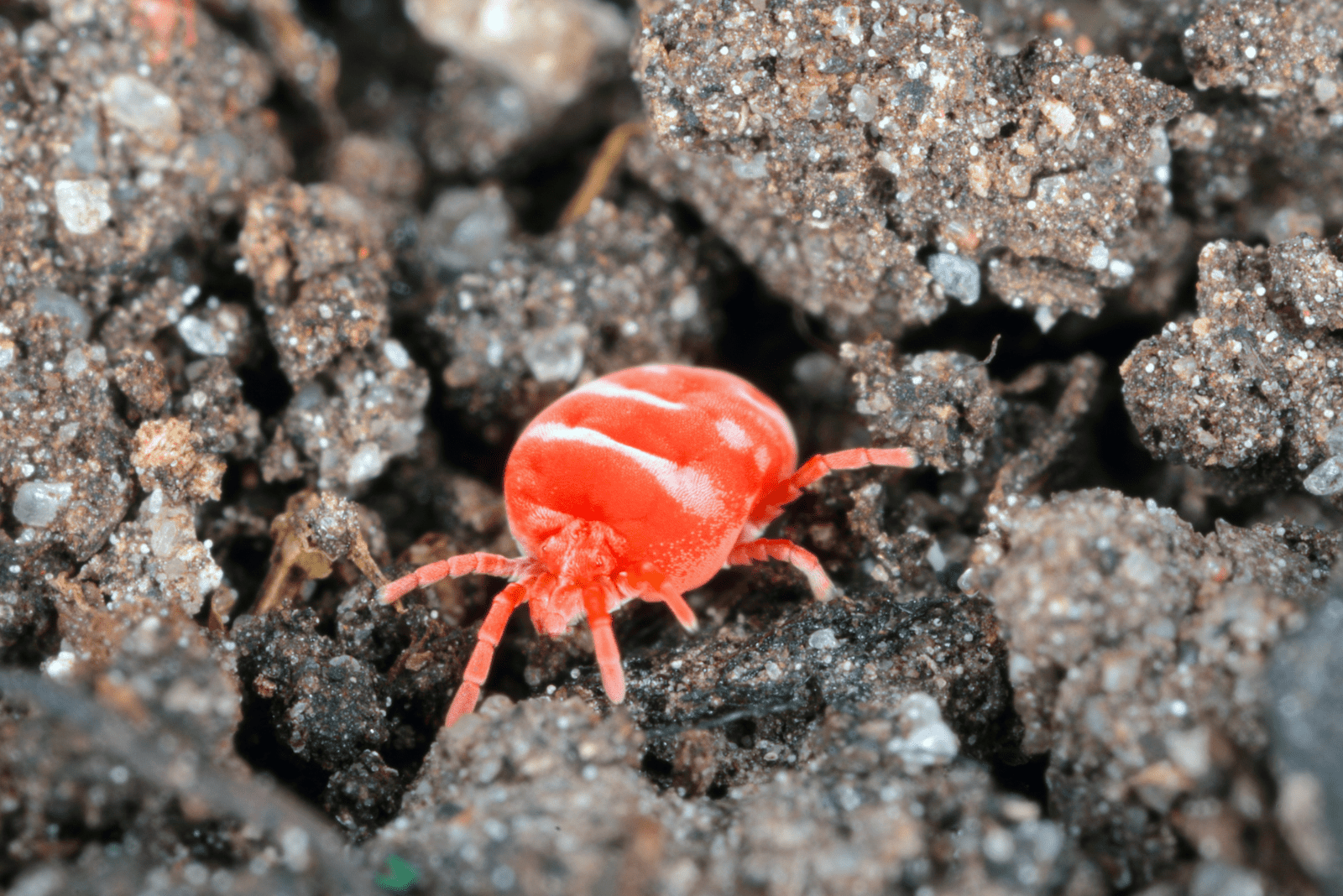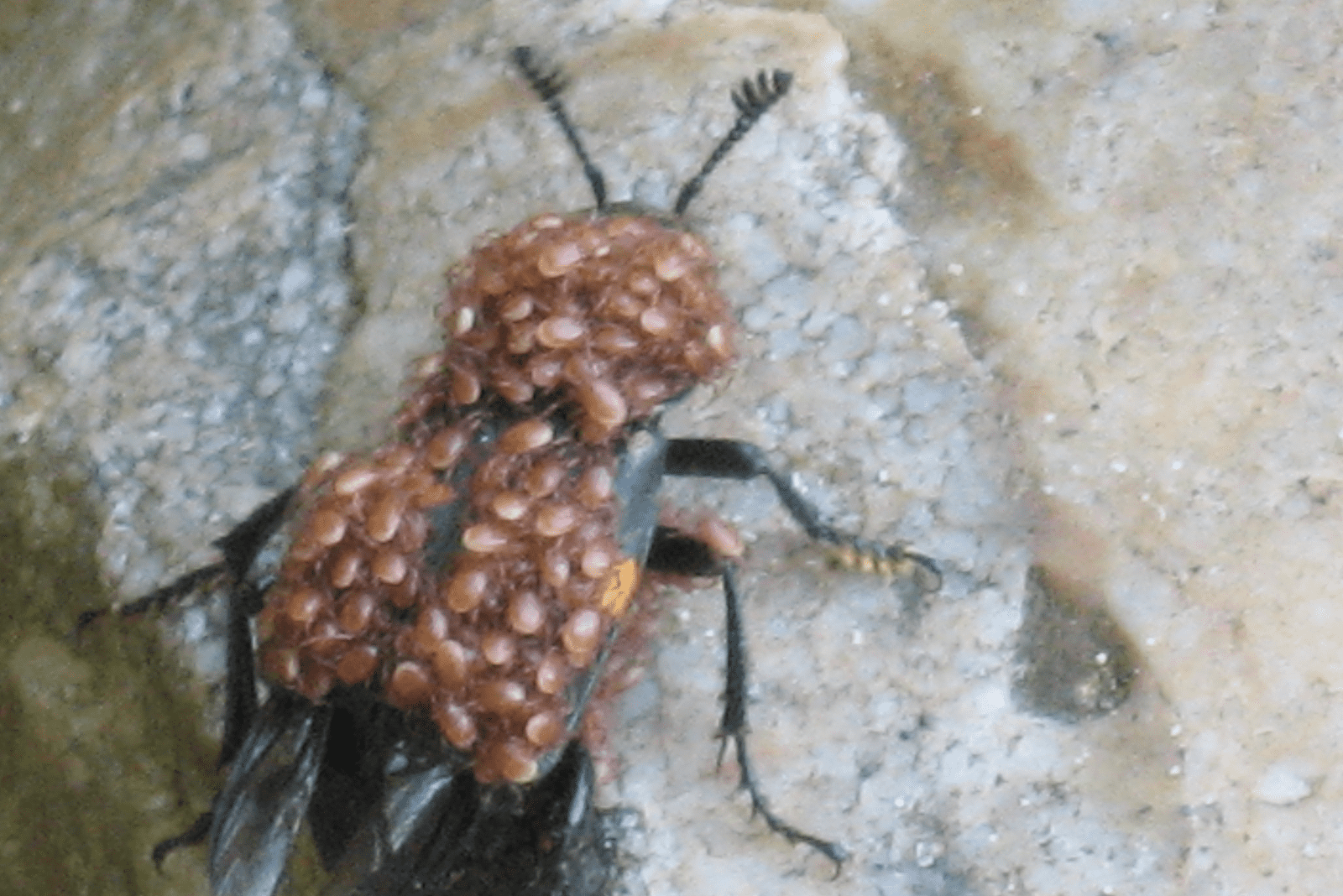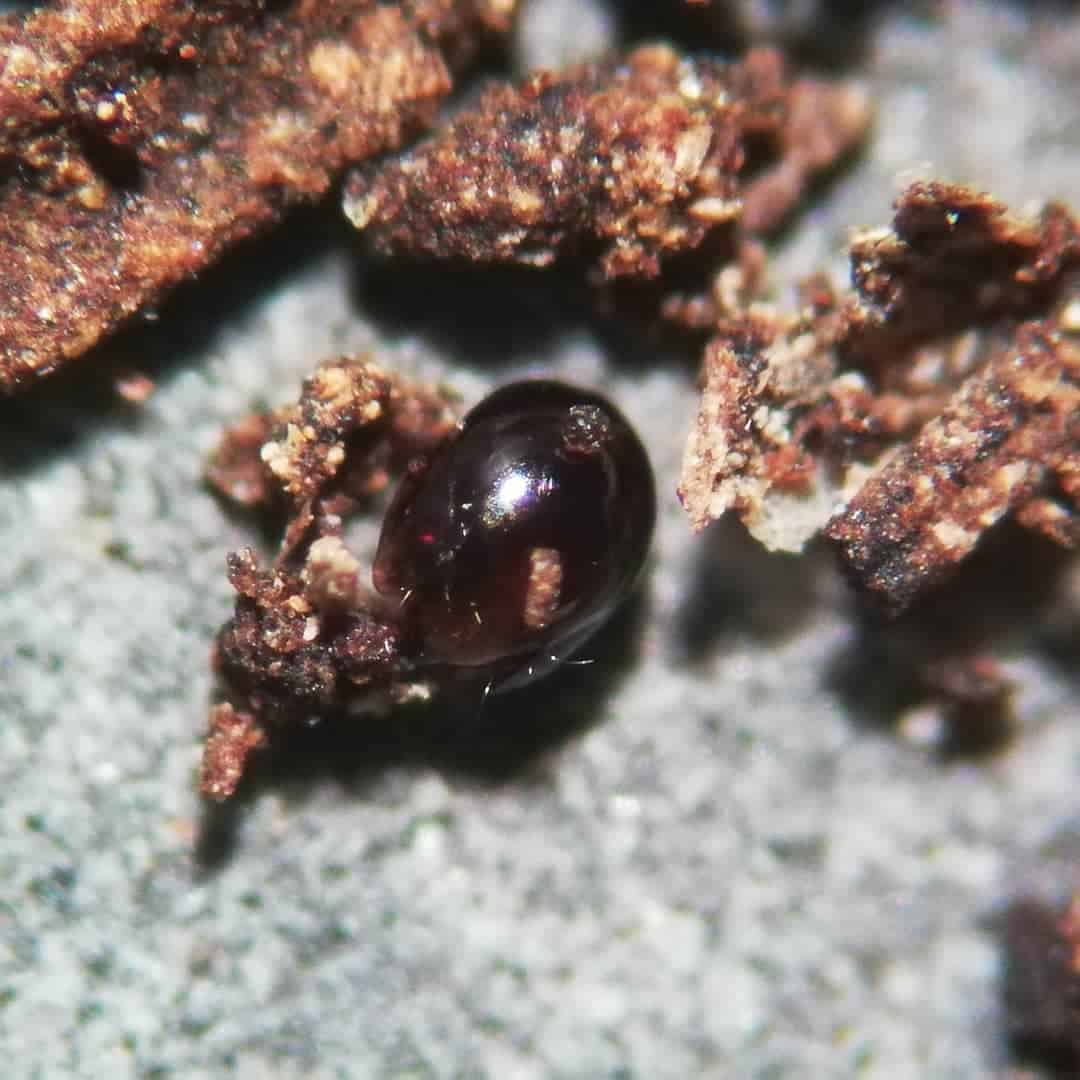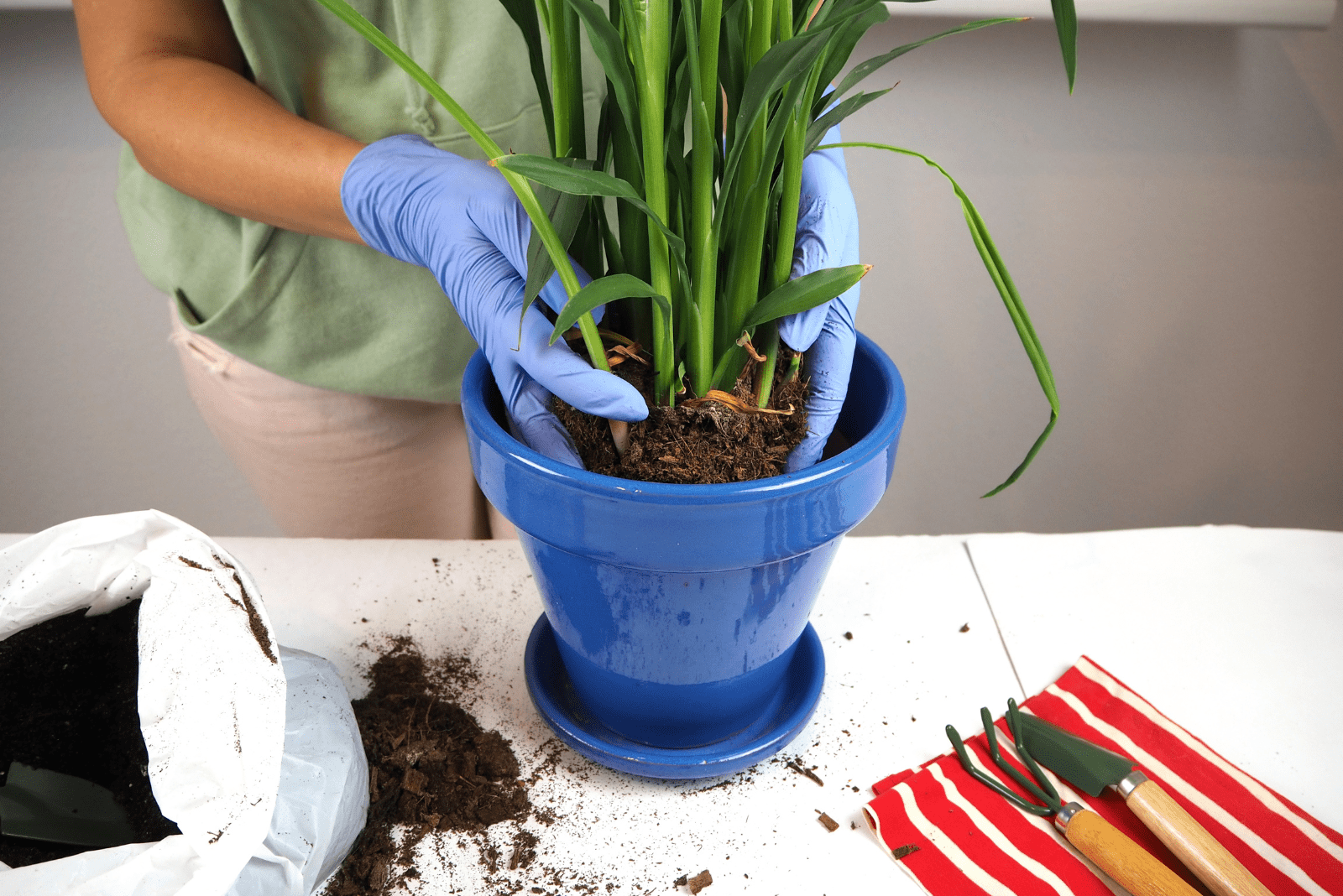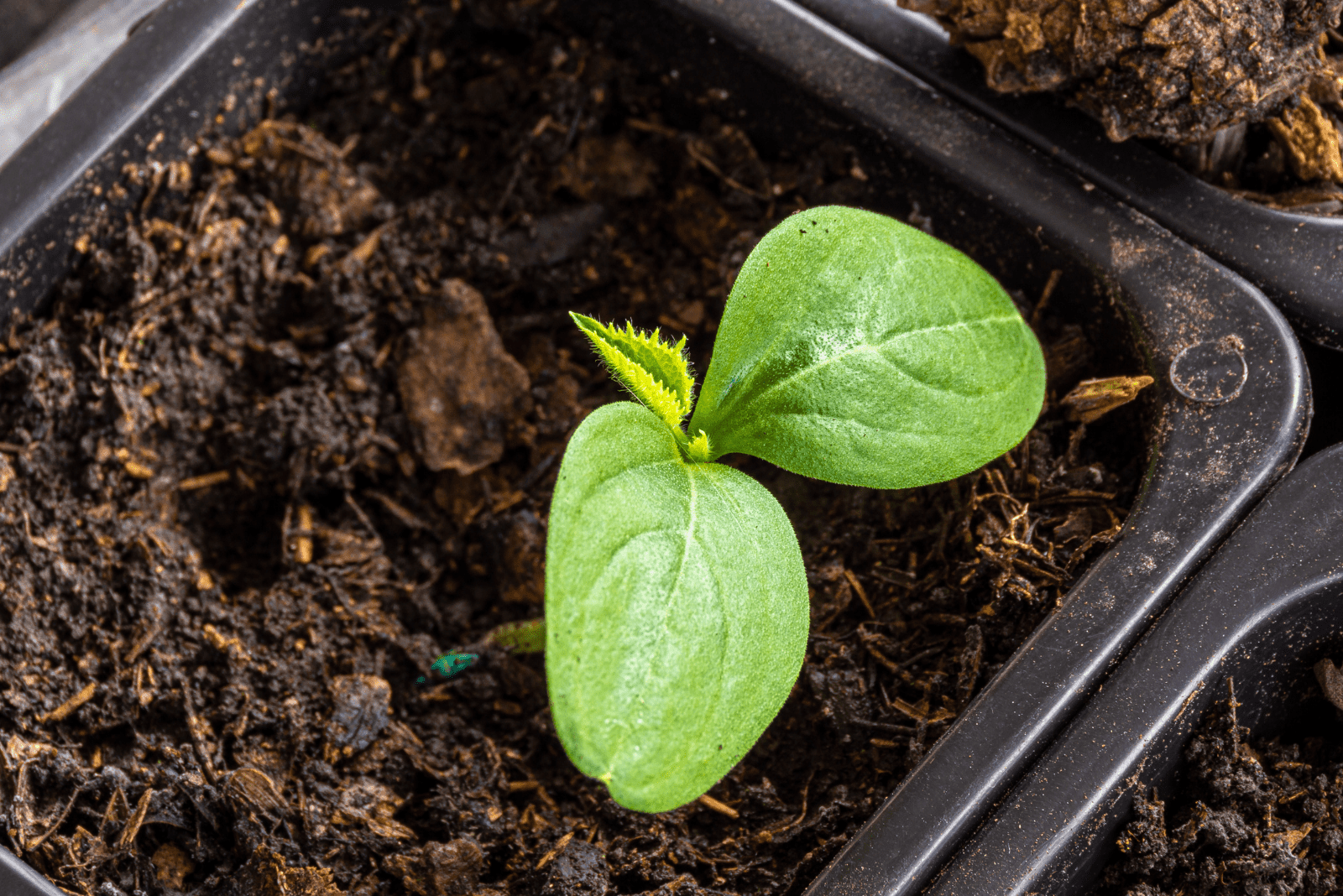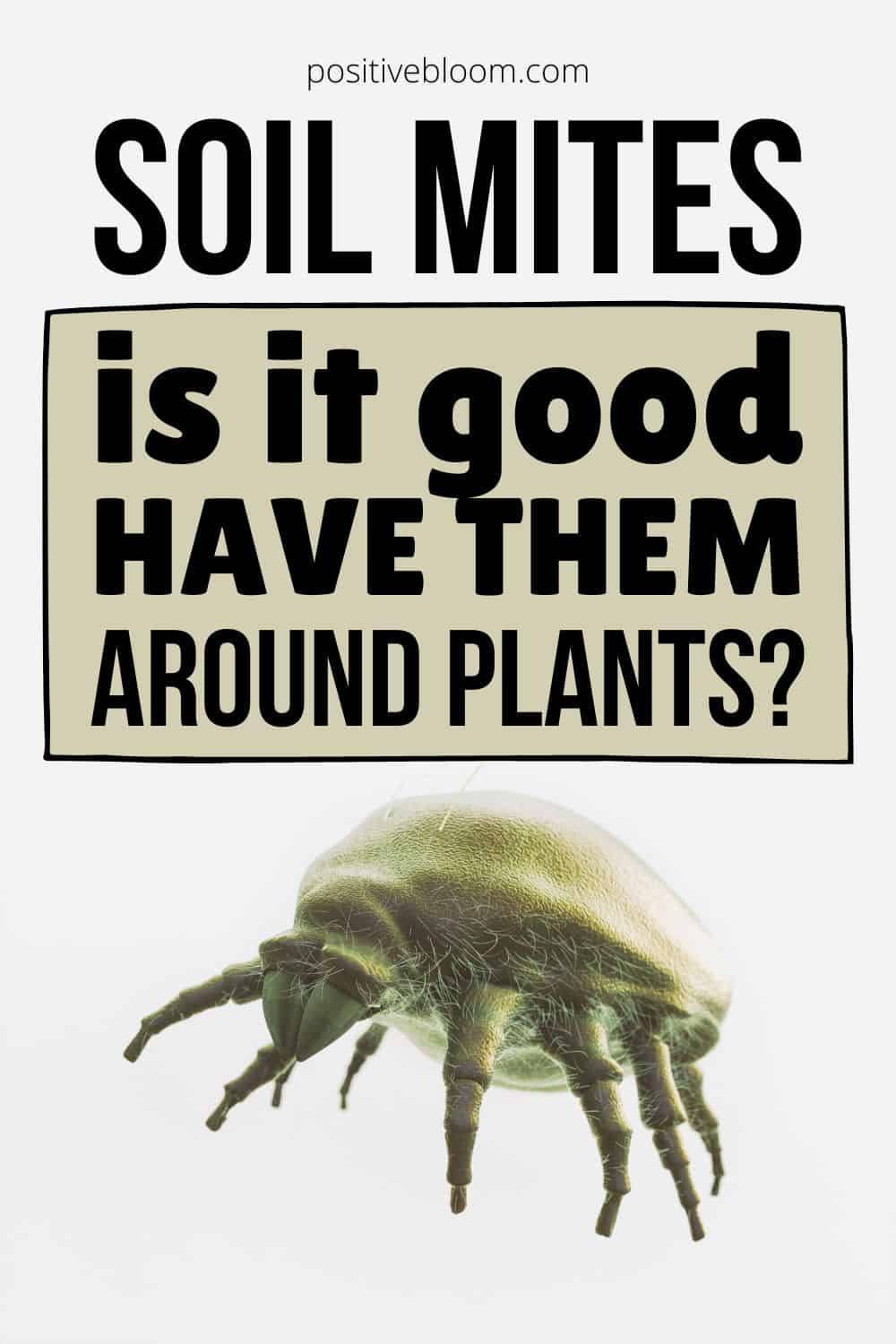If you were wondering whether there are any tiny bugs crawling in your soil… there are, and there are lots and lots of them!
Soil mites are microscopic arthropods that mostly live in the soil, though their tiny relatives can be found in lakes, rivers, and even in our hair follicles!
Scientists have identified about 20,000 different types of soil mites, though they say that there are about 80,000 different species in total. They say that over 100 different species can be found in half a cup of garden soil.
Most of these little guys are beneficial—their primary job is to decompose organic matter in the soil, though each type of soil mite has a specific role in the environment.
However, there are certain types that are problematic and can harm your plants!
Keep on reading to find out more about soil mites and how to get rid of them!
What Are Soil Mites?
The soil mites, or Acari, are chelicerate arthropods related to spiders (also known as Arachnids). They frequently dominate the microarthropod community in a variety of soil types. As many as 500 mites, from over 100 different genera, may be detected in a 100 g sample. With different eating, reproductive, and dispersal methods, this diversified array comprises members in three or more trophic levels.
They are nature’s natural reccylers—beneficial soil mites are able to eat decaying and dead matter, and also return it as a nutrient and food source for plants.
The decaying organic matter found in soil usually includes fungi, algae, nematodes, dead plants, leaf litter, and other natural substances.
Some types of predatory mites eat garden pests and their eggs and larvae in the soil, and also dead insects that are eaten by scavengers species.
As we have already mentioned, soil mites are tiny little creatures that can not be seen by the naked eye—they are 1–2 mm in diameter. So yeah, you will probably need a microscope to carefully examine them.
Their body is usually brown or white, and the most common species, such as turtle mites, can be easily identified because of their hard and round exoskeleton.
We will talk about different species of soil mites and how to identify them, but first, let’s talk about if these critters are actually beneficial, or if we should consider them as we do any other pest that can harm our plants?
What Are The Benefits Of Soil Mites?
Even though we have alienated the majority of bugs, we have to take into consideration that some of them are extremely important for nature and the environment, I mean, there is even a whole study about them called acarology!
Soil mites play a crucial role in the decomposition process—they can break down everything that is found in the soil, from decaying animals and plants to bacteria and soil-dwelling creatures.
Not only do they improve the fertility of the soil, but they also help the plant’s roots to absorb all the necessary nutrients for it to grow and develop.
And once they have served their purpose, they will simply die off and additionally contribute to the nutrient content of the soil… so yeah, there are a lot of benefits!
But are there any downsides?
Other than carrying certain bacteria and parasites, such as tapeworms, there aren’t really any downsides to these creatures. However, this is not a big issue, because you probably won’t end up eating soil mites.
Just be careful when you are dealing with your garden soil—wear gloves and carefully wash your hands after doing anything in the garden.
Since these can also be found in potted plants, make sure to also be careful when repotting houseplants.
Some gardeners try to get rid of soil mites just because there can be plenty of them crawling at the top layer of soil. It can sometimes look nasty, especially if you are scared of tiny bugs.
Since they can be found in indoor plants and outdoor plants, there are lots of different ways for how to get rid of soil mites—scroll down to find more information about ways to get rid of soil mites!
In my opinion, you shouldn’t get rid of soil mites. Though your plants can look unpleasant with numerous soil mites crawling at the topsoil, they can help your plant absorb all the nutrients and also improve the soil’s fertility at the same time.
What Are Different Types Of Soil Mites?
As we have already mentioned, there are approximately 80,000 species. But don’t worry, we are not going to cover all of them. Here, we are going to cover four suborders of mites that are usually found in the soil:
• Astigmata
• Prostigmata
• Oribatei
• Mesostigmata
Astigmatic Mites
Although a few species are free-living at all life stages, the Astigmata, which are closely related to the Oribatida, are primarily associated with arthropods, vertebrates, and other animal groups.
Fungus feeders, a few plant feeders, a few predators, and mites with mouthparts designed specifically for filter feeding in water, are all types of astigmatic mites. Some consume algae in the intertidal zone, exudate from sap-producing trees, or water-filled tree cavities.
Numerous species live as commensals or ectoparasites in the nests of insects, animals, and birds. Mammal hair follicles are parasitized by the specialist deutonymphs of various families.
The Astigmatic mites are usually found in farm soils that are rich in nitrogen and organic matter, and the most common types are very tiny, with soft and white bodies.
Prostigmatic Mites
There are many different types of soil species in the Prostigmata. Although a large portion of these species are predators, several families also contain mites that feed on fungi, and these mites may proliferate quickly.
These types of soil mites are known for being very fast-moving, and they also reproduce quickly if the conditions are optimal.
Though they are known for having different feeding patterns, these types usually feed on plant material and fungi or algae, but some are also predators and scavengers.
The smaller Prostigmata depend heavily on nematodes in their diet. On occasion, some of the smaller predatory species may eat fungus.
Oribatid Mites
Photo from: @daniel_may_u
Most oribatid mites feed on fungi, although some also eat algae, rotten wood, and nematodes, among other tiny invertebrates.
Oribatid mites are also known as turtle mites, and they are the most common ones found in households and gardens—their presence indicates healthy soil! They have a very slow life cycle and can even live from 2 to 7 years. These mites are also known for dispersing calcium as they walk slowly through the soil.
Mesostigmatic Mites
There are several different habitats where Mesostigmata or Gamasida have been found. The majority of them are predators that live in the soil, on the soil’s surface, or on plants. Some can spread out quickly through phoresy.
Edaphic Mesostigmata, which are essential predators of Nematoda, Collembola, and insect larvae in agroecosystems, as well as those living on plants, can effectively manage pests like spider mites.
Although less common than oribatid or prostigmatic mites, mesostigmatic mites are always present in soils and may be significant predators. Similar to the Prostigmata, the smaller species are primarily nematophagous, while the larger species prefer to eat small arthropods or their eggs.
How To Identify Soil Mites
A pest infestation can be determined by looking at the plant’s leaves — there are usually numerous spots, patches, and discoloration on the leaves, though you might find some webbings in a case of spider mites infestation, or sticky sap in a case of an aphid infestation.
However, this is not the case when it comes to mite infestations.
Soil mites can easily be spotted crawling on the surface of the soil!
So, you won’t be able to identify what types of soil mites are out there because of their microscopic size, but they are usually one of the previously mentioned suborders.
Therefore, if your soil is rich in nitrogen, then you are probably dealing with astigmatic mites. You will often find mesostigmatic mites in soil that contains harmful nematodes—these little creatures will act as predators and will help you get rid of these annoying nematodes!
While their presence should be considered a good thing, most gardeners don’t like tiny bugs crawling all over their plants, especially all over the potting soil in houseplants. Though they most likely won’t leave the soil, some folks just don’t like any bugs crawling around in their homes.
I’m honestly really glad when I spot these little creatures in my houseplants, while my dear friend has found millions of ways to get rid of them (she is scared of bugs!). So, I talked to her, and she explained to me the most efficient methods to get rid of plant flies and soil mites.
So, if you still want to get rid of these critters, let’s talk about some methods!
How To Get Rid Of Soil Mites
Even though soil mites are extremely beneficial, some folks just like to have bug-free indoor plants!
It can be hard to determine how these critters appeared in the first place—they could have already been present in the soil or compost pile that you are using, or they could have been attached to the gardening tools that you are using when repotting.
After all, it does not matter where they come from as long as you get rid of them (and their visit won’t harm you or your plants!).
I recommend that you get yourself a magnifying glass to be able to determine that they are really there—you don’t want to spray any pesticides if there are no pests there to begin with!
Luckily, there are a few ways to get rid of soil mites without even using pesticides or insecticides. Keep on reading to learn everything about them!
1. Repotting
The simplest solution is repotting—all you have to do is buy a new potting soil, because the current one already contains numerous soil mites that are ready to recycle!
Make sure that you sterilize your pot (if you don’t want to buy a new one). However, to be absolutely sure that there are not any soil mites, then I suggest you buy a new pot, and also use sterile gardening tools.
Make sure that you don’t harm your plant when repotting, and carefully discard the old soil—you can add it to the compost bin or put it in the garden.
2. Hydrogen Peroxide
Hydrogen peroxide alters the pH of the potting soil to kill the soil mites. You can probably find it in a local garden shop, though you can also buy it for a low price on Amazon!
Once you get the hydrogen peroxide, you should add it every third watering session. Make sure that you follow the manufacturer’s instructions displayed on the packaging because this solution can harm your plant.
You can also use the following mixture—mix 1/2 cup of 3% hydrogen peroxide with 2 cups of water. Pour this mixture over the soil and use it as a drench. It’s preferable to do this outside or over a sink because it will most likely make bubbles.
3. Insecticidal Soap
Sometimes, using chemicals when dealing with various pests simply can not be avoided. However, I always recommend using insecticidal soap or horticultural oils as healthier alternatives.
You can either buy this in-store or try to make your own one by mixing dish soap with lukewarm water. For instance, you will need a vegetable, tree, or nut-based oil, non-fragrant dishwashing soap, and tap water to make your own horticultural soap.
Though you can use any type of oil, the most common ones are vegetable oil, sunflower oil, neem oil, and also olive oil (it does not have to be extra virgin, though!) To make the dilution, mix eight parts water, one part dishwashing soap, and two parts oil. While fresh bottled water is preferred, tap water that has been left to stand for 24 hours is also good.
You can pour this mixture into a spray bottle, then, apply it once every few weeks or after every third watering session.
If these little creatures simply won’t go away, I suggest you use another useful pest control tool, and that is Diatomaceous Earth.
4. Diatomaceous Earth
D.E., also known as Diatomaceous Earth, is made out of ground diatom mantels (or in simpler words, skeletons)—this is highly abrasive for many arthropods, especially soil mites.
Even though the white powder feels smooth to the touch, each grain is sharp. The tooth-like edge will start to tear into the eco-skeleton of the pests, causing severe agony and compromised health. After a few days, the infestation will lessen because the mature soil mite females won’t be able to lay their eggs as many times.
You should apply D.E. evenly on the soil’s surface to create a barrier that will stop the mites from rising to the surface. Wait for a couple of weeks to see if there are any of them left—if so, apply the D.E. again.
Don’t worry, this won’t harm you or your plant, but it will make sure that all of these tiny bugs go someplace else!
5. Pyrethrins
A naturally occurring chrysanthemum derivative is pyrethrins. This natural insecticide has long been used in horticulture due to its low toxicity to both humans and animals.
Pyrethrins can be used to manage a variety of pests and are extremely toxic to insects. It’s crucial to follow the manufacturer’s instructions because the concentration of pyrethrins varies greatly from product to product.
6. Anti-mite Mixtures
As we have already mentioned, there are different ways to get rid of various pests and insects. These include homemade remedies as well!
Though some gardeners are constantly using pesticides, there are some that actually trust the natural remedies more. So, you can try one method first and if it does not work, simply try another one.
Cinnamon Mix
Asides from being super tasty, cinnamon can be used as a bug repellant!
All you have to do is use 1 tablespoon of cinnamon and mix it in 4 cups of water. Pour it in a spray bottle, then spray it onto the soil.
Garlic Mix
Garlic has a strong smell that many bugs can not stand (it makes sense as these plants are not as susceptible to pests). Though bugs don’t like garlic, I absolutely adore it!
My friend actually tried this mixture, and it works wonders.
All you have to do is mix a gallon of water with 4 cloves of garlic. Let it sit for about four days, then remove parts of the garlic and pour the water into a spray bottle. Spray the soil with that mixture, or try adding a few drops of dish soap to make it even stronger.
Frequently Asked Questions
1. Are soil mites harmful?
No, soil mites are not harmful. These tiny bugs are actually extremely beneficial as they are the key to the decomposition process in the soil—they are natural recyclers that decompose dead plants, fungi, leaf litter, dead insects… basically, everything that you can find in the soil, and turn that into healthy nutrients that keep our plants alive!
They won’t cause you or your plants any harm; instead, they might even contribute to the soil’s fertility and also help the plant’s roots to absorb nutrients more efficiently.
2. How do I know if I have soil mites?
If you notice any tiny bugs crawling on the soil’s surface while your plant is still looking top-tier, then you are probably dealing with soil mites. It is quite hard to spot them with the naked eye, though you might notice little brown and white spots crawling.
I suggest you use a magnifying glass and examine the plant carefully—you don’t want to apply any pesticides if there are no pests present at all!
If you notice any white or brown spots when you look at the soil with a magnifying glass, then you already know the answer!
3. What are some ways to get rid of soil mites?
Some of the ways to get rid of soil mites include repotting—all of the problems go away if you put your plant in mite-free soil!
Though you can use some pesticides intended for soil mites, I recommend you try and use insecticidal soap instead. You can also apply D.E. on the soil’s surface or even make a hydrogen peroxide mixture!
Make sure that you always follow the instructions displayed on the packaging of any products that you choose to use.
If you are more into natural remedies, there are some homemade anti-mite recipes that you can use to get rid of these annoyances. For instance, you can mix garlic and water or try the cinnamon one (more details in the section above).
To Sum Up
Having soil mites around your plants is ultimately not a bad thing—they will help your plant to absorb nutrients while at the same time, decompose the decaying matter in the soil and turn it into delicious nutrients for your plants.
If you are really not a fan of tiny bugs, there are always efficient methods to get rid of them!
However, if you do spot soil mites, it means that your soil is healthy and fertile—it’s not Mcdonald’s but your plant is absolutely lovin’ it!
Please note that these are small creatures that are hardly visible to the naked eye, so make sure that they are actually present in the soil before applying any pesticides or miticides.
I hope this article was helpful.
Until next time!
Like this post? Share or pin it for later!

